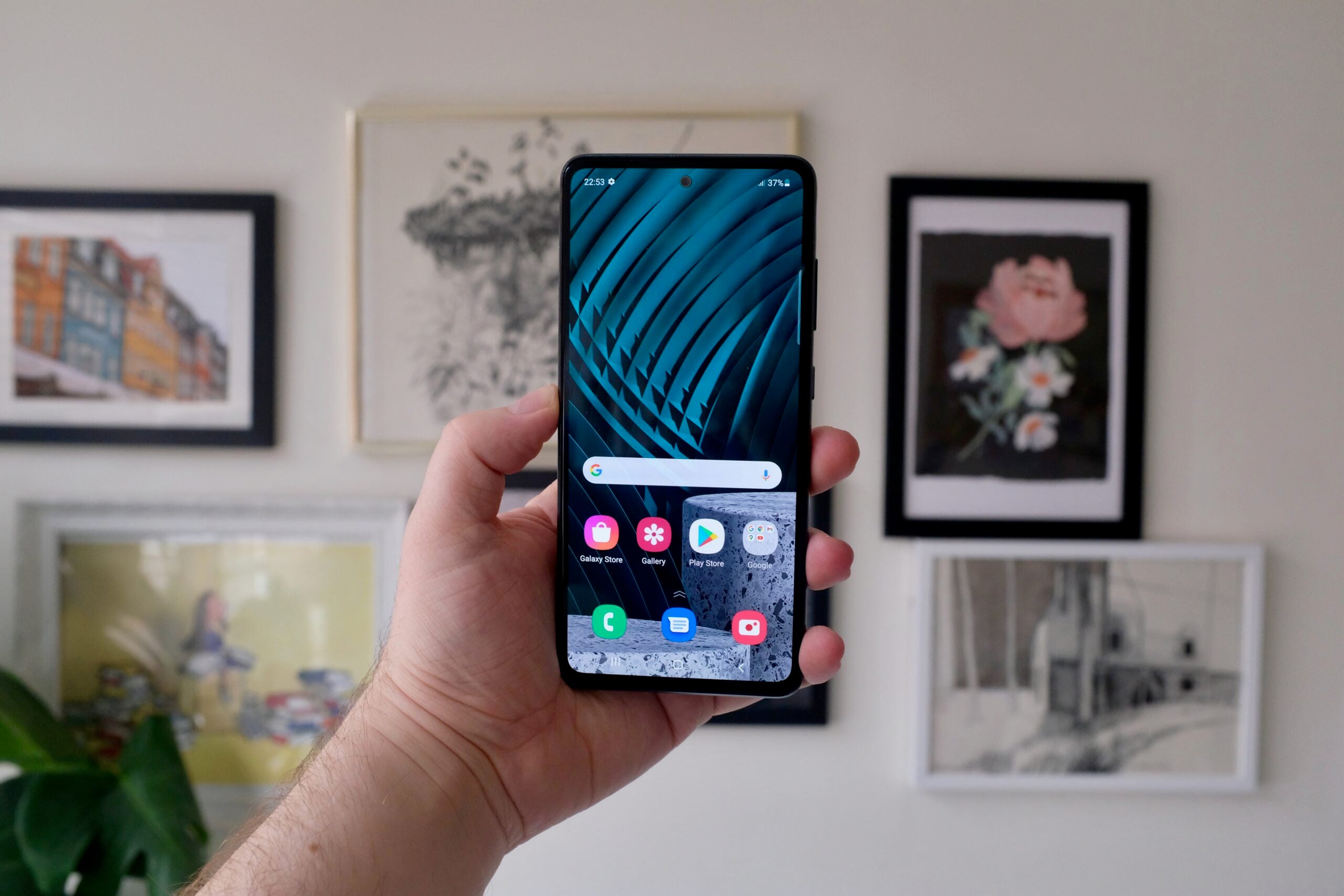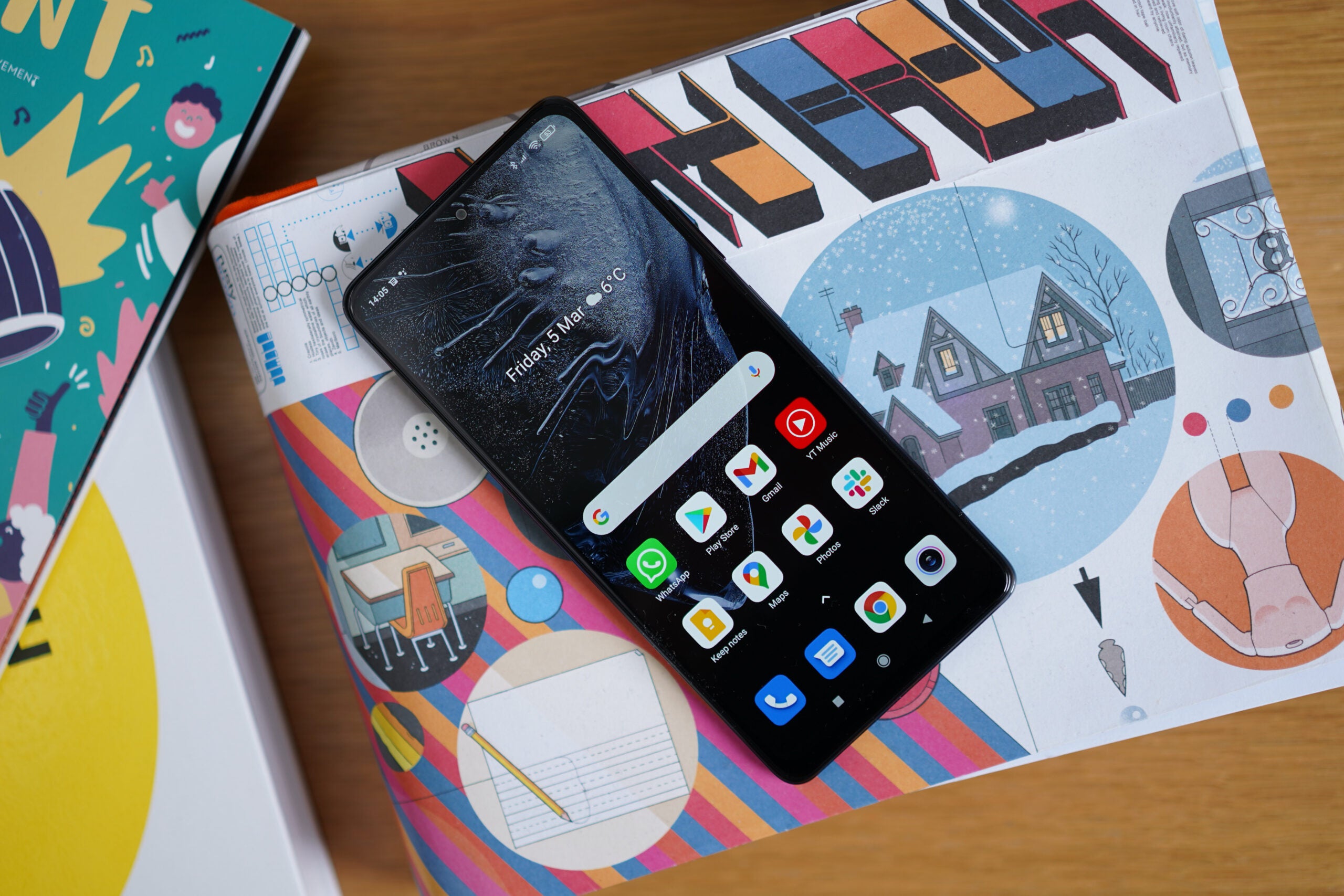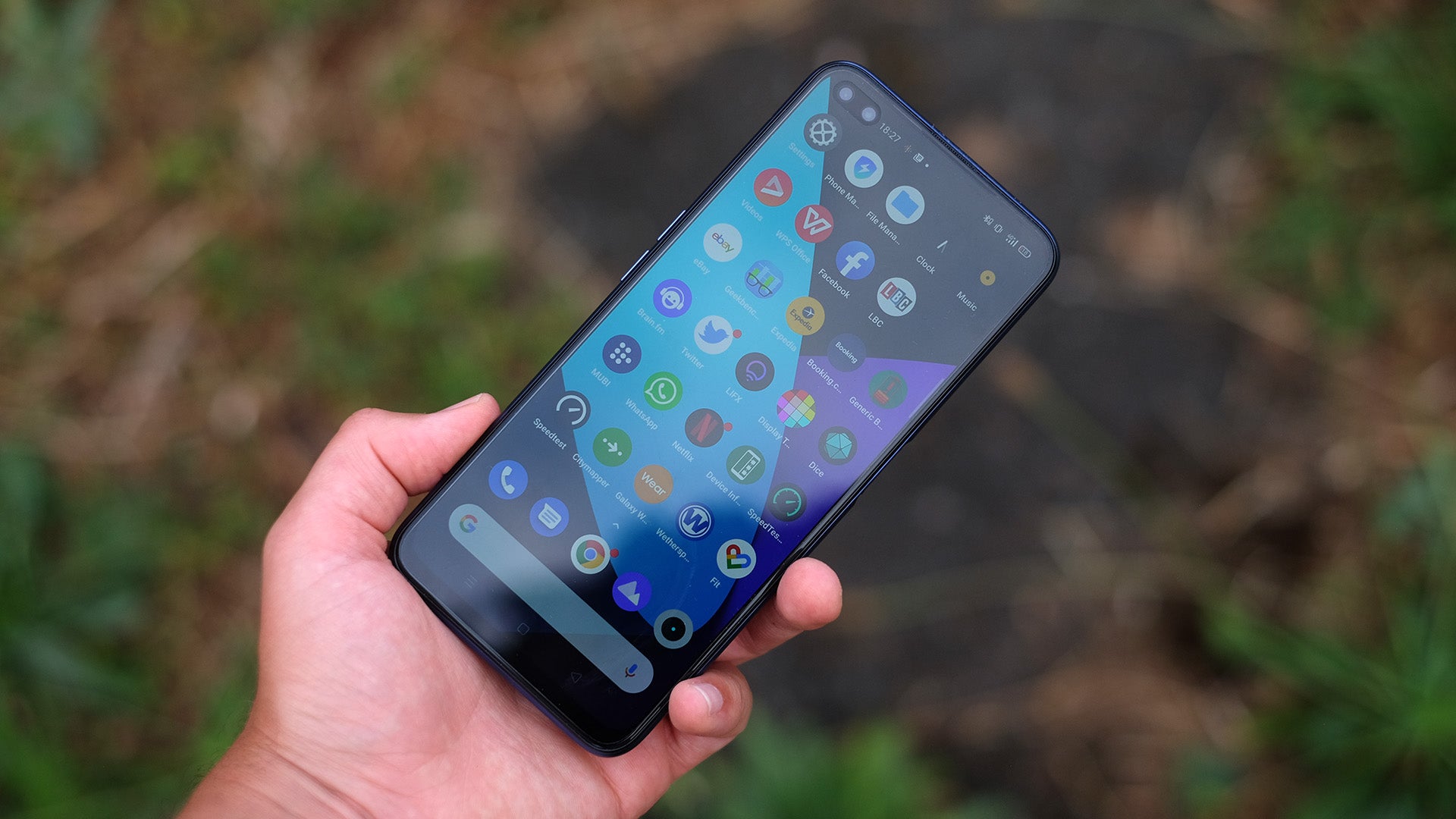Moto G8 Power Review
Moto G8 Power Review
All about the battery
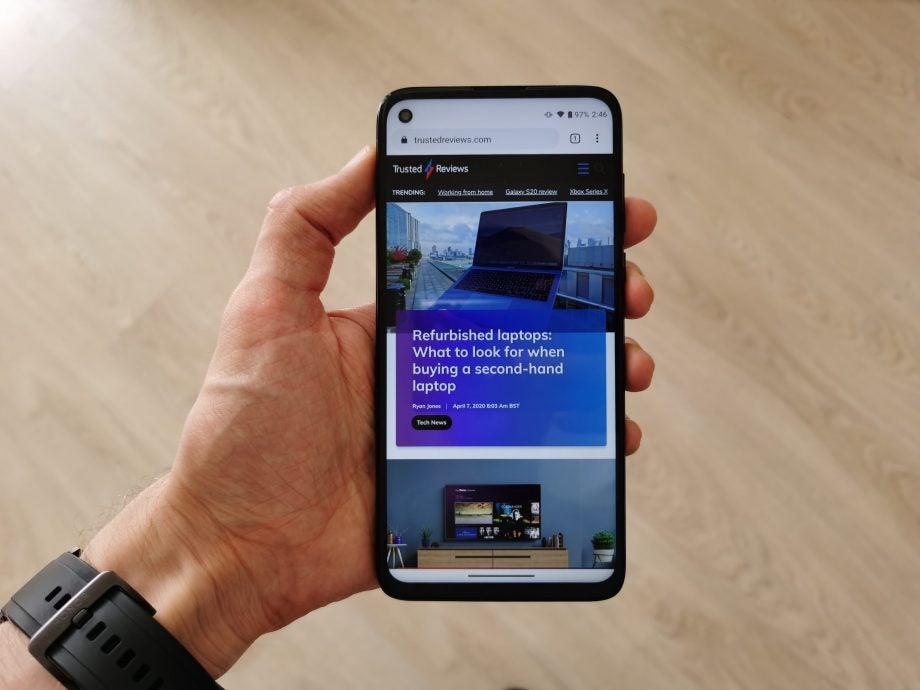
Verdict
If you've got a budget of around £200 then this a great choice, it's good across the board, with an excellent battery, and a good screen. The camera is decent and very versatile, while performance matches that of other phones in the same price bracket.
Pros
- Massive battery
- Reasonable price
- Good camera
Cons
- Unremarkable design
- Takes a while to charge
Key Specifications
- Review Price: £219
- 155.95 x 75.84 x 9.63mm
- 197g
- 6.4-inch Full HD+ display
- Snapdragon 665 chipset
- 5000mAh battery
- Quadruple camera
- Android 10
The Moto G8 Power has been given the “Power” moniker due to its fearsome 5000mAh battery capacity, but does this lower mid-range device have the full package or is it a one-trick pony?
In this review we put the Motorola G8 Power through its paces, to see if the screen, the processor, and the quadruple-camera set-up are just as impressive.
Design and Screen
- Relatively large device with a 6.4-inch screen
- Very much a fingerprint magnet
- Not the sharpest display, but still more than adequate for the price
The Moto G8 Power is a relatively large device with a 6.4-inch screen that features a small “punch-hole” notch in the top left corner, housing a selfie camera.
Its back panel has a slight ribbed effect visible just below the surface, which has a smooth glossy finish that unfortunately acts as a fingerprint magnet. Also on the rear side, you’ll find the four camera sensors plus the flash, along with an M-branded fingerprint scanner.
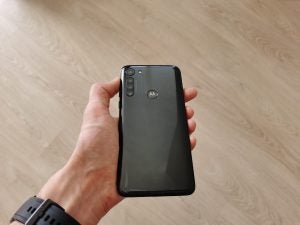
Motorola G8 Power’s rear
Functionally, it has Micro SD card storage that expands the original storage by up to 512GB and there’s also a 3.5mm headphone jack.
Overall it has a businesslike appearance that won’t exactly divide opinion, but it’s unlikely to turn heads either.
The Moto G8 Power screen measures 6.4-inches, and it’s got a 1080 x 2400p resolution, which is nice and crisp so that text and images are not pixellated.

Web browsing on the Motorola G8 Power
As with many (though not all) phones at this price point, it does have an LCD display. LCD lacks the contrast of an AMOLED and doesn’t have HDR support either, so colours don’t “pop” out of the screen in the same pleasing manner as AMOLED counterparts. These factors could mean that it would come as a downgrade if you’re used to a higher quality screen, but it still stacks up well against its rivals at this price point.
If you want to find that fully immersive experience for watching videos and playing games, then you would probably have to spend quite a bit more money, but otherwise, this display should serve you well.
Performance
- Powering the phone is a Snapdragon 665
- Benchmark scores are good for the price
The Motorola G8 Power has a Snapdragon 665 chipset, which is a modest mid-range chip rather than being a world-beating powerhouse.
When performing undemanding tasks such as messaging or social media I had no problems at all, but when running more demanding games you can sense this processor’s deficiencies – the experience is a little jerky, making it less enjoyable and potentially less competitive.
Motorola has also introduced a feature called “Moto GameTime” to this year’s G8 series. Intended to boost performance and allow you to adjust settings and notifications to minimise distractions, when I used this feature my game crashed – and let me tell you, that doesn’t exactly make things more convenient.
We also put the Moto G8 Power through benchmarking tests to see how it fairs in comparison to similarly-priced devices:
| Geekbench 5 Single-Core | Geekbench 5 Multi-Core | 3D Mark Slingshot Extreme | |
| Motorola G8 Power | 312 | 1361 | 1110 |
| Motorola One Hyper | 502 | 1584 | 1167 |
| Xiaomi Mi A3 | 307 | 1269 | 1137 |
It has scores typical for its price, but that does mean that it’s not ideal for gaming. If you use your phone for less demanding tasks, it should still hold up well, but if gaming is a priority, then you might want to look for an alternative that packs more of a punch.
Battery life
- 5000mAh battery paired with HD+ screen is great for endurance
- Fairly slow to charge
The Motorola G8 Power boasts a massive 5000mAh battery; that’s bigger than several big-name flagship devices, including the Huawei P40 Pro, the Samsung Galaxy S20 Plus, and the iPhone 11 Pro Max. It’s likely to be one of the key selling points of the phone for anyone browsing the specs listings, but how does it perform in real-world testing?
Fortunately, the G8 Power does a great job lasting through a long day of heavy usage. To take one example, it was reduced from full charge to 97% after one hour of streaming YouTube videos over WiFi. This device should easily last you through one day and well into the next, even if you use it heavily.
However, there is one caveat to the battery performance: its charging speeds aren’t quite so impressive, as this device doesn’t boast the fast-charging tech that does exist for some other phones of similar prices.
| Time | Battery Percentage |
| 0 minutes | 20% |
| 10 minutes | 30% |
| 20 minutes | 40% |
| 30 minutes | 48% |
| 40 minutes | 56% |
| 50 minutes | 63% |
| 60 minutes | 70% |
| 70 minutes | 79% |
| 80 minutes | 87% |
| 90 minutes | 92% |
| 100 minutes | 96% |
| 110 minutes | 98% |
| 120 minutes | 100% |
As you can see from the table above, the G8 Power took two hours to charge from 20% to full, which isn’t speedy by anyone’s standards. You might be best off leaving it to charge overnight. At least with such a big battery, it’s unlikely to be very run down by the end of the day.
Camera
- Four rear cameras
- These include a 16MP main, 8MP zoom and 2MP depth
- You’ll generally get pleasing pictures
While it’s never going to challenge the best camera phones around, the snappers here are capable.
The Motorola G8 Power has a total of four rear cameras: a 16-megapixel main camera, an 8-megapixel telephoto lens, an 8-megapixel ultrawide lens, and a 2-megapixel depth sensor.

Motorola G8 Power’s main camera takes decent shots
The main camera generally takes pleasing pictures such as the one above. Colours are naturalistic and accurate rather than overblown, and detail is decent though not great. However, you can see that not all the fruit is in sharp focus in this image.

Motorola G8 Power’s main camera captures a spectrum of colours in detail
This shot again captures a spectrum of colours in a fair amount of detail that allows you to read most of the finer text on the bottles.

Motorola G8 Power’s main camera struggles in low-light
But when shooting in lower light conditions, the flaws are exaggerated, with bright lights blown out and a significant amount of detail is lost. The device doesn’t perform exceptionally well at all at night either, but that’s fairly typical of camera phones around this price point.

Motorola G8 Power’s ultra-wide lens is a nice addition
The ultrawide camera gives you the option to have a larger frame, and it’s by no means a huge step down from the main camera, but a good choice to have when you want to squeeze more into the frame. Although as with many examples of this kind of lens, there’s some noticeable “stretching” distortion in the image.

Motorola G8 Powers portrait mode isn’t quite as good
The telephoto lens is used for portrait photos, working in combination with the depth sensor for a “bokeh” effect. It seems like this lens isn’t quite as good as the previous two; detail isn’t picked out as readily on the subject, and the bokeh effect doesn’t help your subjects to stand out of the image in the way it does on the very best camera phones.

Motorola G8 Power’s macro camera does a good job
There’s also a macro camera thrown into the mix for even more versatility. Frankly, I would rarely find the opportunity to use this snapper, which specialises in extreme close-ups just centimetres away from the lens; however, it did a great job in capturing the action figure in the image above which only measures approximately 2.5-inches.

Motorola G8 Power’s 16-megapixel selfie camera delivered good results
The selfie camera has a 16-megapixel resolution, matching that of the main rear camera. It delivered a good performance in general. For the bokeh effect, it relies on software rather than an accompanying depth sensor; while the result is more striking (as seen above), it doesn’t distinguish completely cleanly between the subject and the background, with a couple of blurred edges found in the hair.
Despite a couple of shortcomings, this is still a good, versatile set of cameras for the price; you’re unlikely to find a much better all-round package for the same price.
You should buy it if…
You want an exceptional battery life
The Power series is known for its class–leading battery life and that’s very much the case here thanks to a 5000mAh cell. If you only care about longevity, maybe for trips away or festivals, then it’s certainly worth taking a look at this.
You shouldn’t buy it if…
You want a really sharp display
With a 720p resolution stretched out over a 6.4-inch panel this is far from the sharpest phone at this price point and you’ll notice this when watching media or scrolling through photos.
FAQs
We think the Moto G8 Plus is the best of the G8 range
There is a dual SIM version of the Moto G8 Power
You won’t find 5G support on the Moto G8 Power
Specs
How we test phones
We test every mobile phone we review thoroughly. We use industry standard tests to compare features properly and we use the phone as our main device over the review period. We’ll always tell you what we find and we never, ever, accept money to review a product.
Trusted Score
Jargon buster
USB-C
The modern USB connector you’ll find on most Android phones, new laptops, cameras and games consoles. It’s reversible and used for charging along with data-transfer.
LCD
The type of display usually used on cheaper and mid-range devices. Lacks the punch on an OLED panel.
mAh
An abbreviation for milliampere-hour and a way to express the capacity of batteries, especially smaller ones in phones. In most cases the higher the mAh, the longer the battery will last but this isn’t always the case.


